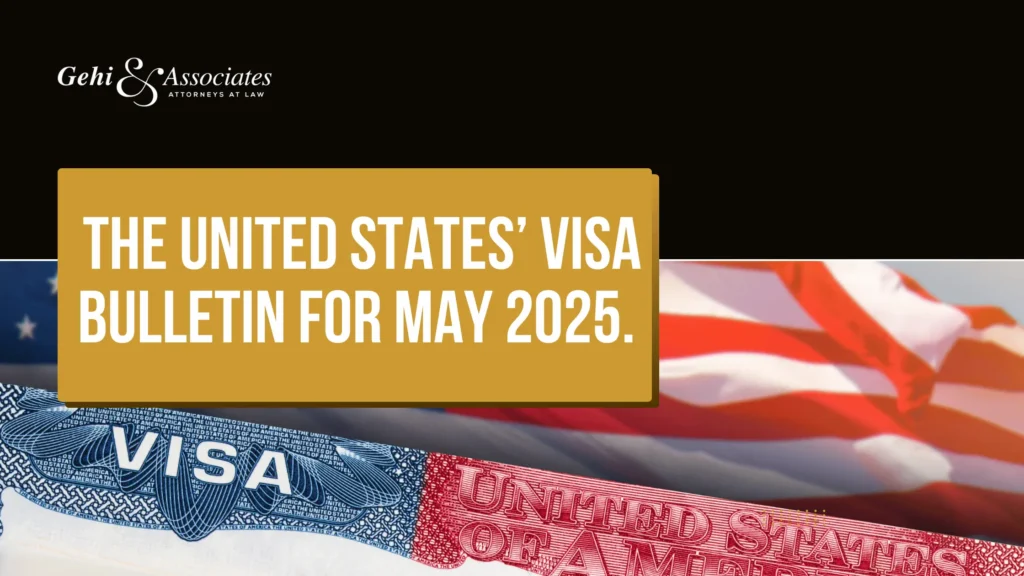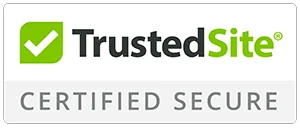Blog Categories
Recent Posts
Practices Areas

The United States has been dealing with a big problem – not enough healthcare workers. This has made things even harder for an already overworked healthcare system. The reason for this shortage is a mix of things, such as more people getting older and needing more healthcare, which has made it super important to have skilled healthcare workers. The COVID-19 pandemic really highlighted this problem, with hospitals and clinics overwhelmed and patients having to wait a long time for care. A guide on the visa options open to foreign healthcare workers in the United States is crucial in addressing this shortage.
Visa options for temporary purposes
One way to quickly get more healthcare workers is by hiring them from other countries. Bringing in skilled workers from abroad is a smart move to tackle the immediate need for more staff. It not only helps fill important jobs but also brings new ideas and knowledge from around the world to the healthcare scene in the US.
As health care reform is a big deal in politics and we hear a lot about how changes in immigration rules affect certain groups of people, the importance of immigrants in medical jobs is getting a lot of attention. Immigrants make up a big part of this workforce, making up a large number of the people in the US who work as doctors, nurses, dentists, and other medical jobs.
If you are in the healthcare business and looking to bring in some international talent, we have put together a guide to the most common work visa types in the US that you might want to think about for your future international hires.
Visa options for temporary purposes
The most popular short-term visas for foreign doctors are the J-1 “graduate medical education or training” visa and the H1-B visa, which is sponsored by an employer. However, some doctors might also be able to get an O-1 “extraordinary ability” visa, and those from Canada or Mexico could qualify for a TN visa.
Sometimes, foreign doctors and medical school grads can work and live in the US as a spouse of someone with a visa or for other reasons allowed by the US Citizenship and Immigration Services (USCIS).
The H1-B visas.
H1-B visa types are for temporary US work for skilled foreign workers, especially those with at least a Bachelor’s degree, costing more than J-1 visa types. They are for medical professionals, like doctors, to work in the US, such as with patients, teaching, or research, but they must meet specific requirements like having the right license, passing US medical exams, and being fluent in English.
Employers must complete a form, agree to conditions, and inform the site’s workers. Each visa is linked to a specific employer and location, but health workers can switch jobs if they transfer the H1-B visa.
There is a yearly limit to H1-B visa types, but exceptions apply, like if the employer is a university or if the health workers agree to work in a shortage area. Health workers can stay up to six years, with the possibility of extending for another three years if they apply at least 365 days before the six-year limit.
However, this limit can be challenging for those in residency or whose jobs don’t meet certain requirements. Additionally, if a health worker wants to stay after the validity period of the H1-B visa type, they will need a work permit.
J-1 visas.
Health workers from other countries often get approval to study and work in the US through the J-1 visa, which is a big plus for their medical school and the place they will be working.
This visa doesn’t need a sponsor or any paperwork, and there aren’t any strict rules about pay or letting employees know about it. But, it is not as good for health workers as the H1-B visa, especially when it comes to moving around, changing jobs, and staying in the US for a long time. Ordinarily, health workers under the J-1 visa type have to return and live in their home country for at least two years before they can even think about getting an H1-B visa or becoming a permanent resident.
There are ways to get around the two-year rule for the J-1 visa type, though. Thanks to state and federal programs, health workers can skip this part. To help out areas that don’t have enough health workers, the law lets health workers working in certain places for at least three years get a special waiver.
This includes places that are hard to find health workers for, like Health Professional Shortage Areas (HPSAs), Medically Underserved Areas/Populations (MUA/MUPs), and places like the Appalachian Regional Commission, the Department of Veteran Affairs, the Appalachian Regional Commission, the Department of Health and Human Services, and the Delta Regional Authority.
O-1 visa type.
The O-1 visa type is for really talented people from other countries in areas like arts, science, sports, teaching, or business. It is a great choice for super skilled health workers who can show they are at the top of their game.
To get an O-1 visa, you need a job offer from a company or someone who can sponsor you, and you can only stay for up to three years at first. After that, you can stay longer by applying recurrently for a one-year extension.
To be considered for an O-1, the health workers has to show they have done some big things in their field. Most of the time, health workers who get O-1 visas have written books or articles, and they have played a key role at well-known places. Just having a fancy degree or special skills isn’t enough.
There are a bunch of good things about being in the O-1 visa type group like there is no limit to how many O-1 visa types can be given out each year, you don’t have to follow the usual wage rules, you don’t need a specific degree, and the rules for getting a license are a bit easier. On the other hand, the H1-B visa has yearly limits, strict rules for licenses and pay, and you can only stay for six years.
Health workers who get into the US with a J-1 visa type and have met the two years home country residency rule can also get an O-1 visa type. But, they can’t switch to a different visa in the US and have to apply for their O-1 visa type from another country’s consulate or embassy.
TN visa type.
Thanks to NAFTA, health workers from Mexico or Canada who finished their medical studies abroad can get a TN visa if they mainly work in teaching or research in the US. They can also take care of patients as long as it is just a side job related to their teaching or research work. If the health worker went to medical school in the US, they can work as a health worker in the US with a TN visa type.
Derivative visas.
Health workers who are married to the main J-1 or L-1 visa holders might be able to get a work permit as a J-2 or L-2 visa holder. These work permits are only good for as long as the main visa holder’s visa is valid. However, J-2 and L-2 visa holders can work for any employer.
Visa options for green card purposes
EB-1 petitions.
Health workers who have done research or made big contributions to medical care could be in line for the top spots in the EB-1B Outstanding Researcher or EB-1A Extraordinary Ability groups. Health workers who have an O-1 visa might also be able to ask for permanent residency, skipping the long process of getting a green card through work.
The Outstanding Researcher group needs a company to sponsor, proof that the health worker has at least three years of teaching or research experience in their area, proof of their big achievements in the field, and proof they have a job offer for a permanent teaching or research role at a college or research center. The USCIS thinks a permanent job is one that is either permanent, on a track for permanent status, or has no set end date.
The Extraordinary Ability group doesn’t need a company sponsor or proof of a permanent job. For an Extraordinary Ability petition, which is similar to the O-1 visa petition, there is no need for a certification exam and the health worker can dodge the long wait for a green card through work.
To be called an “Alien of Extraordinary Ability,” a person needs to show they have had a big achievement (like winning a major international award like the Nobel Prize or an Olympic Medal), or meet at least 3 criteria.
The EB-2 national interest waiver (NIW) petitions.
The EB-2 NIW petitions are pretty much like the EB-1 but don’t need as strict requirements to get approval. The main difference is that EB-1 needs an official DOL green card approval for most cases, while the EB-2 NIW doesn’t need you to follow the regular application steps because the work they do is good for the US.
If you are applying for EB-2 NIW, you usually need a high-level degree and proof of being a top-notch professional in your field. This includes things like your school’s diplomas and degrees, your 10-year work history in your field, a professional license or certification, getting paid well for your work, being part of a professional group.
For people applying under the NIW, they also have to show why their work in the US is really important and worth it, and that they are the best person to do it.
Other ways.
Health workers can get a green card in several ways, including through family ties, seeking political asylum, or special government programs.
Family-based immigration has different levels, with immediate relatives like spouses, parents, or children of US citizens at the top. Spouses or children of US citizens should look into this option.
Lower-level family members, such as spouses or children of Legal Permanent Residents, married children of US citizens, or siblings of US citizens, face long wait times.
Political asylum is another way for those afraid to return home due to persecution for race, religion, nationality, social group, or political views. It involves an initial application and an interview. If approved, the person can later apply to get green card status but must wait a year before taking such steps.
The Diversity Visa Lottery, run by the Department of State, offers 50,000 green cards to people from countries with low US immigration rates. It is a lottery, so the chances of winning are low, but it is worth trying if you are eligible.
Health workers should also see if their spouse, who is not a US citizen or Legal Permanent Resident, can get permanent residence faster or easier. They should explore all options for both individuals to find the best path to a green card.
Family-based petitions, asylum, and investor petitions don’t depend on the person’s job but are available to health workers in certain situations.
Get help!
Getting the right visa type, as a health worker, and dealing with immigration can be really complicated. The healthcare field needs a lot of skilled people, making it even more tricky.
That is why it is super important to get help from the pros to make it through these steps smoothly. At Gehi and Associates, we have a team of immigration lawyers ready to help you every step of the way. We will make sure your application is spot-on and keep you in the loop with any updates.
Contact Us
Our law offices in NY offers free consultations, both virtual and in-person, for all legal and immigration matters. To schedule one, please contact us today!










